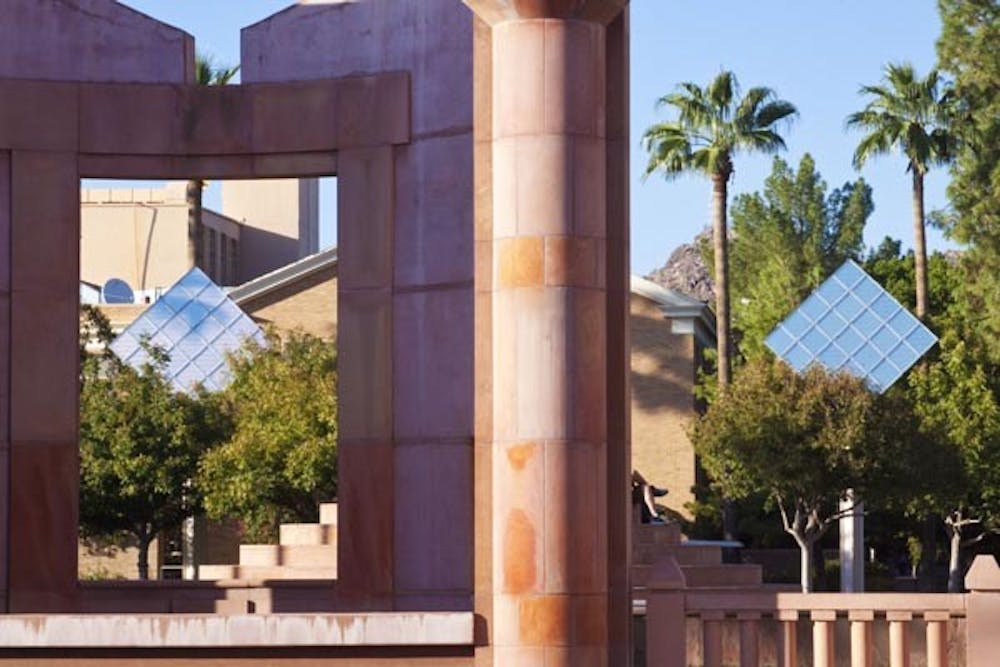ASU and government officials had the same message for a group of 200 investors, engineers and scientists interested in renewable energy Monday.
“The future is on you,” said U.S. Rep. Harry Mitchell of Arizona’s 5th district.
Mitchell delivered this idea at the Southwest Energy Innovation Forum held at ASU’s SkySong Innovation Center in Scottsdale.
The goal of the forum was to bridge the gap between scientists and engineers developing clean, renewable energy sources, and businesses that could fund the research and bring it to the market.
Mitchell’s statement echoed the sentiments of Arun Majumdar, director of Advanced Research Projects Agency-Energy — a branch of the U.S. Department of Energy designed to fund research and support the development of energy-based technology.
Majumdar, an ASU professor from 1989 to 1992, spoke to the group about the desperate need to begin linking new technology with business to bring the U.S. to the forefront of producing clean, renewable energy.
“This is the time to act,” Majumdar said. “There is an opportunity to create the next industrial revolution.”
Majumdar added that these technologies being much more widespread is imminent, saying that if the U.S. did not take over as a leader in sustainability, someone else would.
Majumdar expressed concern over the idea that while the U.S. has been at the forefront of developing sustainable energy technology, pointing to pioneering the technology behind solar panels, the country has been behind the curve in actually funding the technology.
A study released in September by the Earth Policy Institute revealed that, while the U.S. is improving in its solar production, it still lags behind other countries.
According to the study, China and Taiwan made up 49 percent of the world’s solar installations in 2009, and the U.S. is responsible for about 5 percent.
Majumdar said that one of the major goals of the Advanced Research Projects Agency-Energy was to bring down the price of solar energy from approximately $3 or $4 dollars per watt to $1 per watt by 2016. He compared this feat to President Kennedy’s “moon shot” in the 1960s.
“Let’s go to the moon and come back safely,” Majumdar said, paraphrasing Kennedy’s message before sending U.S. astronauts to the moon in 1968.
Majumdar noted that connecting business to technology is vital to bringing down energy prices in the U.S., saying that energy has to appear marketable for businesses to invest in making the technologies more widespread.
“People need to believe that it is in their personal interest to invest in energy,” Majumdar said.
Rick Shangraw, senior vice president for the Office of Knowledge Enterprise Development at ASU, said that one of the problems at the university level is inefficiency of technology transfer offices — offices at universities that help bring any new technology that the university develops to the open market.
“[Technology transfer] offices need to be flexible and speedy,” Shangraw said.
Shangraw said that an inefficient transfer could lead to new technology not seeing the market for up to three years.
Shangraw added that collaboration between universities and industry is important, saying that ASU’s technology transfer office strives to work with people who have knowledge of both the industrial market and of university settings.
This idea of communication was something Shangraw advocated between multiple universities as well, saying that universities need to realize that they are not the only programs developing innovative, new technology.
“There are hundreds of universities that have technology,” Shangraw said. “Wouldn’t it be nice if we could combine those portfolios?”
Shangraw said that ASU currently works with the University of Pennsylvania and Dublin City University in Ireland to share research portfolios in order to collaborate on projects.
Reach the reporter at Michael.reppenhagen@asu.edu





